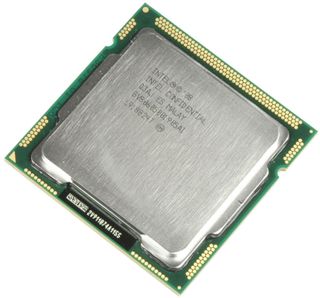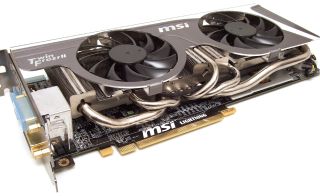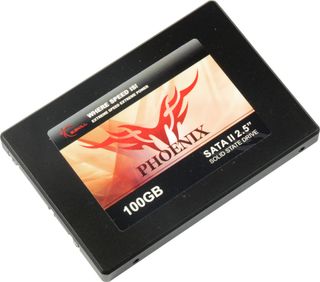Time To Upgrade: Should You Dump Your 2007 PC?
Intel agressively promotes its Core i3/i5/i7 series, but we wonder: Does it make sense to replace a three-year old high-end PC? In the end, quad-core processors were already pretty powerful in 2007. We created a brand new system and a 2007 PC to compare.
2010 Components: Core i7-870, Radeon HD 5870, G.Skill Phoenix SSD
Processor: Intel Core i7-870

The Core i7 processor is available in two forms: employing the LGA 1366 interface with a triple-channel DDR3 memory controller and four or six cores, or on the LGA 1156 interface with a dual-channel DDR3 controller and four cores. The 45 nm processor runs at a nominal 2.93 GHz clock speed, but it has a second-generation Turbo Boost feature. This allows an individual core to accelerate by up to five 133 MHz speed increments (667 MHz) if there is a lightly-threaded workload. Two active cores speed up by a maximmum of four increments, and three or four cores under load can still accelerate by 266 MHz if there's sufficient thermal headroom. Thanks to the Turbo Boost feature, Core i7 employing the LGA 1156 interface is actually equivalent to the higher-end LGA 1366 version in many cases. The latter, however, gets the benefit of being available in six-core configurations, should you require more processing horsepower.
All Core i7-800-series processors have a shared 8 MB L3 cache memory and 256 KB L2 cache per each of the four cores. We paired the i7-870 with two OCZ DDR3-1333 2 GB DIMMs.

Multiple cores can run 266 MHz faster than the 2.93 GHz nominal speed if the TDP allows.
Graphics: Radeon HD 5870 (MSI R5870 Lightning)

We used this graphics card in the article Factory-Overclocked Vs. Reference Graphics. MSI deployed a more powerful twin fan cooler with heat pipes here and runs the card at a slightly higher than nominal clock speed. This comes at a significant price premium, unfortunately, through the result is improved thermal performance. We'd urge caution for those with budget constraints, as the added cost will only yield a few percent more performance, putting you in the price range of a GeForce GTX 480. Still, this is one of the fastest single-GPU graphics solutions available today and a modern equivalent to what the Zotac GeForce 8800 GTS was in 2007.
Storage: G.Skill Phoenix (100 GB SandForce SF-1200 SSD)
Stay on the Cutting Edge
Join the experts who read Tom's Hardware for the inside track on enthusiast PC tech news — and have for over 25 years. We'll send breaking news and in-depth reviews of CPUs, GPUs, AI, maker hardware and more straight to your inbox.

Last but not least, there's the hard drive, which we decided to replace with a modern SSD. G.Skill’s Phoenix family is based on the SandForce SF-1200 controller and provides high throughput paired with excellent I/O performance and low power consumption. You have to fork out a good $300 on such a product, but in 2007 you probably did the same for the Western Digital Raptor drive. Our SSD only offers a 100 GB capacity, but anyone who cares about performance will only settle for an SSD as a primary system drive after trying it.
Current page: 2010 Components: Core i7-870, Radeon HD 5870, G.Skill Phoenix SSD
Prev Page The 2010 System: Intel P55 Express Next Page Test SetupMost Popular

